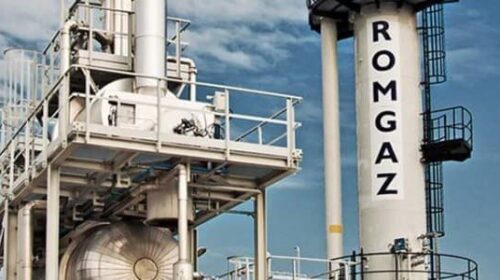On October 19, Romania’s Romgaz and Azerbaijan’s Socar inked a memorandum of understanding expressing an intention to “explore the opportunity of jointly developing a liquefied natural gas project [LNG] in the Black Sea” (Romgaz.ro, October 19). Both parties committed to preparing a comprehensive feasibility study; however, this concept is not new, as the Black Sea LNG Project (as coined by Romgaz) has been discussed for over a decade already. According to the official Romgaz press release, the Black Sea LNG Project will consist of “an LNG liquefaction plant, a regasification plant, as well as all other installations and facilities needed to transport natural gas from the Caspian region into Romania” (Romgaz.ro, October 19). In other words, the concept strongly resembles the previous Azerbaijan-Georgia-Romania Interconnector (AGRI) project (memorandum signed back in 2010). Therefore, to develop the project, the following will need to be constructed:
- Onshore pipeline infrastructure in the Caucasus, including an expansion of the Azerbaijani section of the South Caucasian Pipeline and the development of new pipeline infrastructure in Georgia (ge, 2018);
- A liquefaction plant in Georgia, possibly at the port of Kulevi, where Socar already operates an oil transshipment terminal;
- An LNG regasification terminal in Romania.
The scale of activities needed for this project’s development will assuredly lead to high monetary costs. The first official estimates will most likely be published after the completion of a feasibility study depending on the proposed capacity; however, it can be deduced from the results of the AGRI project that the budget for this project could be a few billion euros; in 2014, the cost for such a project was estimated at 4.5 billion euros ($4.7 billion) for a capacity of 8 billion cubic meters of gas per year (Romania-insider.com, October 20).
The project’s revival is taking place now due to the impact of Russia’s assault on Ukraine and the European gas market. In response, European Union member states are actively replacing Russian natural gas imports. Historically, Russian gas consumption in the EU (including the UK) has been as high as 40 percent of overall demand. Now, Russian gas accounts for only about 7 percent, with an ever-growing number of shipments from alternative suppliers (Bruegel.org, November 2). At the same time, the Black Sea LNG Project corresponds with Azerbaijan’s plans to increase natural gas production and exports as soon as possible for the future (Trend.az, October 24).
Related: The EU’s Latest Plan For A Natural Gas Price Cap
This renewed urgency from Baku comes as Brussels actively seeks to open alternative energy corridors in the Caucasus. Earlier this year, Azerbaijan and the EU signed the Memorandum of Understanding on a Strategic Partnership in the Field of Energy, establishing a goal to double pipeline gas deliveries via the Southern Gas Corridor (from the current level of 10 billion cubic meters per year) by 2027 (Ec.europa.eu, July 18). As it should be understood, the newly proposed Black Sea LNG Project is meant to supplement, rather than replace, the aforementioned declaration. In truth, hypothetically speaking, both the LNG project and the Southern Gas Corridor could someday accommodate gas supplies from the other Caspian Sea littoral countries if the Trans-Caspian Gas Pipeline is ever completed.
The Azerbaijani-Romanian LNG project will also have a significant impact on wider Central and Eastern Europe. This is particularly true for Ukraine, which has been trying for some time to secure access to the global LNG market via import terminals in a number of regional countries, including Poland and Croatia (see EDM, April 21, 2021)—a need made all the more urgent by the war with Russia and the postwar requirements for reconstruction. To this end, in June 2022, Warsaw announced that it would double the size of its planned floating storage regasification unit at the port of Gdansk due to increased interest from its neighbors, including Ukraine (Notes From Poland, June 6).
When Ukraine’s recovery and reconstruction eventually begin, gas consumption will grow, likely faster than the damaged or shuttered domestic gas production facilities will be able to accommodate. Therefore, all additional regasification capacities in Ukraine’s neighbors would be beneficial for the country’s energy security. Moreover, depending on who will be the majority owner, the proposed LNG import terminal in Romania could also be used to enable deliveries not only from Azerbaijan but also from other suppliers (e.g., the United States).
Of course, the Black Sea LNG Project is still nascent and only the 2023 feasibility study’s results will prove whether Socar and Romgaz could actually undertake the binding investment decisions. As for now, however, it is apparent that demand is sufficient for new LNG projects in Central and Eastern Europe. Despite the EU’s decarbonization goals, the lack of Russian gas on the European market must be replaced by alternative suppliers, and it will take several years at least to fill the gap in full. Nevertheless, growing energy relations between the Caucasus and Central and Eastern Europe will only serve to further ease the transition away from Russian energy.





